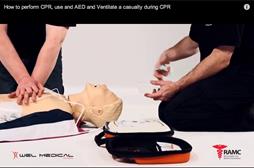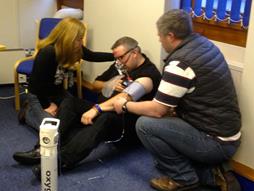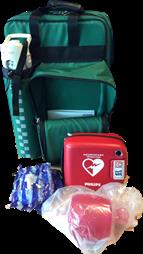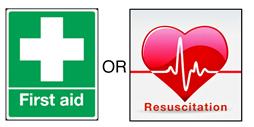How do you keep your skills up to date in between formal courses?
28-09-2020
In our last blog about ‘are training courses the complete answer to improving survival in emergencies?’, we discussed how regular simulated exercises can help to regularly test your organisations emergency drills and help keep staff’s skills up to date. However, even with simulated exercises every few months, we know that individuals skill retention (even a few weeks after training) can be poor.
It is a well used term that ‘if you don’t use a skill you loose that skill’. The problem is for many individuals the skills undertaken in resuscitation training are (luckily) rarely used in practice. This combined with the fact that the mandatory training period for skills such as performing CPR or using an AED is now yearly (and a good deal of training courses now have even longer expiry of certification. eg ALS is 4 years for HCP’s and the HSE FAW is 3 years for lay persons) does not bode well for maintaining skills.
So, how else can we really keep our knowledge and skills up to date?
Talking to Steve Furnell, our lead clinical educator, he commented;
We always encourage course attendees to go back and regularly read through their course notes, handouts and workbooks. This will help keep the brain ticking over between courses. One attendee who I have now taught for over 6 years comes back every year and proudly tells me
“I read one chapter of my ILS manual per month, 11 chapters=11 months=time to do new course… The words and pictures just help keep my knowledge up to date in-between courses”
I think ideas like this are fantastic. The old age saying is a picture tells a thousand words and refreshing our skills regularly by going through a manual is an excellent idea. However, we also believe that a film shows a lot more (Steve noted that a one minute film running at 25 frames per second would show 1500 pictures!) and the evidence is getting stronger that clinical skills training films can be used before, during and after courses as well as ‘stand alone’ self teach material.
This is the reason that Resuscitation & Medical Consultancy Ltd have recently invested into the production of a series of resuscitation training films. However, rather than just produce yet another film demonstrating a skill, our team have gone a little further to ensure the film really can help increase knowledge and skill retention.
Steve commented that during training we use a four stage approach to teaching a practical skill, and this has been modified in the approach towards the training films. Therefore each film is broken down into three stages;
• Stage One is a real time demonstration of the skills being shown.
• Stage Two has a slowed demonstration with an instructor commentary of how to perform the skills being shown.
• Stage Three is once again a real time demonstration, but this time with some quick visual reminders of the key things to remember when performing the skills demonstrated.
This method allows viewers to see what they are going to learn (Stage 1), Learn all about it (Stage 2) and summarise the key learning points (Stage 3). This has been tried, tested and published as a method of learning and we hope by having these films available free of charge to our clients will be an asset to them.
One CPR & AED course attendee recently commented about the new films;
“Having never learnt anything like this before was really daunting. However, the instructor on the day, Phil, made the subject really fun and enjoyable. My biggest fear though was being able to remember everything, but being able to go back and watch the training films at home allowed me to really consolidate the theory and practice we had covered on the course. I am intending to watch the film once every few weeks at work so that by the time I come to my AED refresher in a years time I will actually remember most of the skills!”
Currently we have two training films for our clients to view. These are:
1. How to perform CPR and use an AED
2. Different methods of ventilation whilst performing CPR (mouth-to-mouth, pocket mask, bag valve mask and supraglottic airway).
These films are now available to view on both our website by looking under the training videos tab in our resource section (http://localhost/resources/) Or on our You Tube Channel here – https://www.youtube.com/channel/UCXtGfS3h1YHb_xdumRirM2w
For any advice or to ask a question about this blog please contact us at info@ramcltd.comVisit the Resuscitation and Medical Consultancy Limited website for more information on How do you keep your skills up to date in between formal courses?





